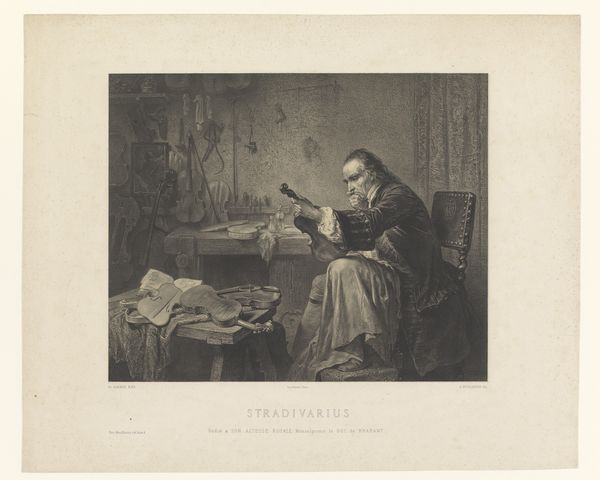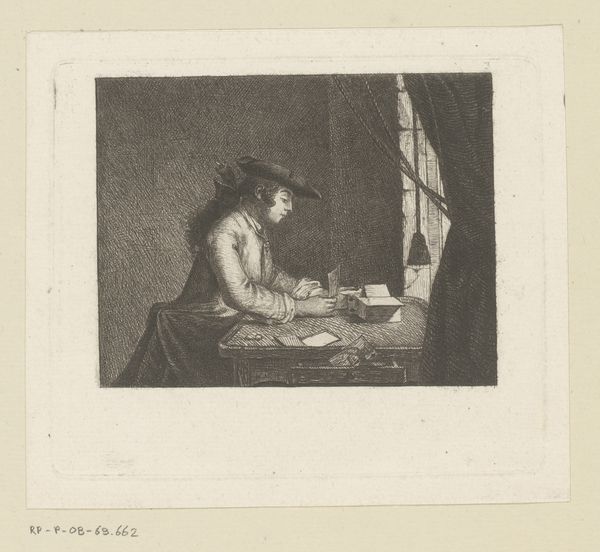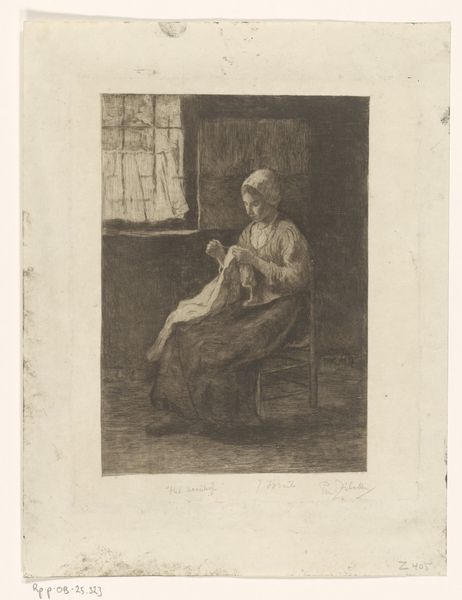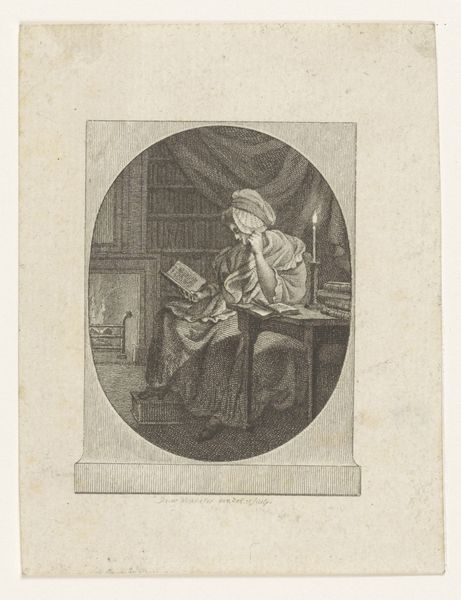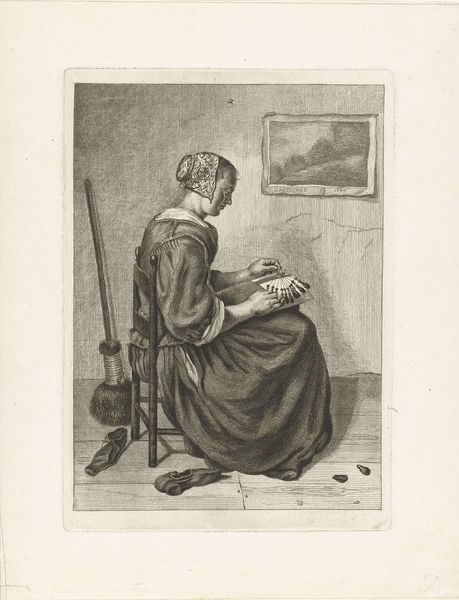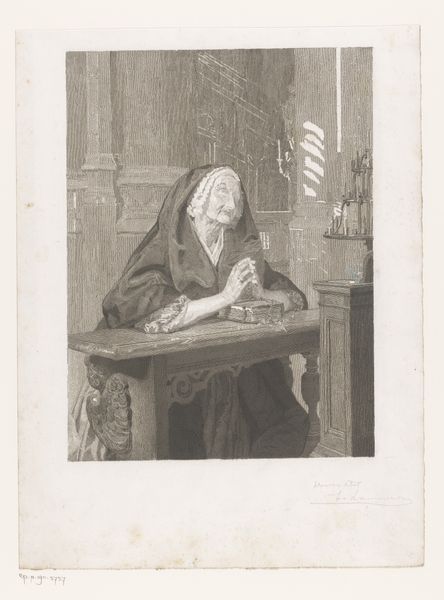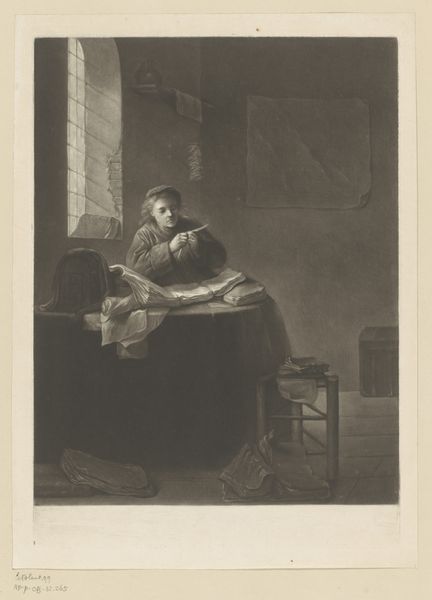
print, etching
#
portrait
# print
#
etching
#
genre-painting
#
realism
Dimensions: height 257 mm, width 207 mm
Copyright: Rijks Museum: Open Domain
Editor: Here we have Albert Emile Artigue’s "Young Woman Drinking from a Wine Glass," an etching print created sometime between 1860 and 1927. The woman looks to be enjoying a moment of quiet contemplation. What do you see in this piece? Curator: I see a work steeped in the complexities of female representation and domesticity within the context of 19th-century Realism. This seemingly simple genre scene invites us to consider the limited roles often assigned to women of this period. Note the inkwell and paper beside her, the wine. Is this about simple indulgence, or is it more complex? What story could the female figure be crafting, away from the public gaze? Editor: That's a fascinating point! I hadn't really considered the limitations she might be facing. Curator: Consider also the realism. It challenges the idealization of women common in art history. Does depicting the woman "as she is" inherently dismantle or reinforce existing power structures? Is it, perhaps, revealing an inner world or a silent protest against societal constraints? Is she truly alone in her choice? How much agency did women have over their actions? Editor: The fact that she is literally writing her own narrative adds another layer. Are we seeing resistance, however small, against the constraints? Curator: Precisely! And we, as viewers, become implicated in that narrative. We're invited to imagine the world she inhabits and the world she perhaps hopes to create. What does her gesture of lifting the glass really convey? Is it pleasure, or perhaps defiance? What did you discover? Editor: That there’s much more to this seemingly simple scene than initially meets the eye. Thank you. Curator: Indeed. Questioning the dominant narrative is a revolutionary act, in life and in art.
Comments
No comments
Be the first to comment and join the conversation on the ultimate creative platform.
